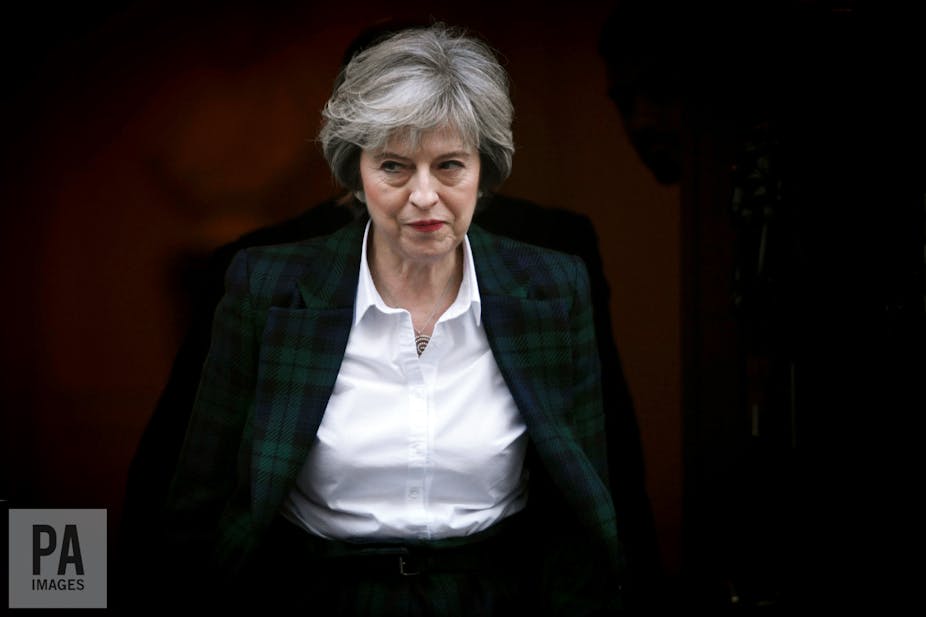Almost seven months after Britain voted to leave the European Union, the country’s prime minister, Theresa May, has finally given some much needed clarity on how Brexit will happen. Or has she?
May cast an optimistic tone on the vote to leave as she made a long-awaited speech in London, characterising Brexit as an outward-looking, internationalist view as expressed by the British people. But in doing so, she jettisoned many of the things which the UK has wholeheartledly supported during its membership of the bloc. It was a driving force behind establishing the single market, for example. Even David Cameron’s pre-referendum vision for Europe incorporated further integration in the field of services.
Much of the speech was destined for a domestic audience. May was telling UK voters that she has interpreted their desire to control immigration as more important than attempting to remain in the single market, in full or in part, no matter what the cost. So the UK will leave the single market and customs union, and instead seek to strike a “free trade” deal and “partnership” with the EU as the “best friend and neighbour”.
But extolling the virtues of free trade, while firmly committing to leaving the world’s largest free trade bloc is a strange juxtaposition. The same might be said of claiming that “migrants” from the EU need to be reduced but that the UK is open to the world. Saying the British people “want to travel to, study in, trade with countries not just in Europe but beyond the borders of our continent” is all very well, except that reciprocal rights are only available to “the brightest and the best”.
All this might play well for a domestic audience, but it hardly seems likely that, beyond the new US administration, governments around the world will jump at the chance for lengthy, protracted negotiations with the UK. Although the speech identified other areas of the world where agreements could be sought, no timeline was given. As anyone who has examined the process of free trade agreements knows, “quick deals” which satisfy all parties are few and far between.
A bold gamble
May’s commitment to a vote before both houses of parliament suggests that she expects to lose the case currently being considered by the UK supreme court. But there is no clarity on what happens if either (or both) houses vote down the deal. And her decision to give her speech outside parliament has denied MPs the right to question her directly on this point – at least for now.
For European Union member states, the speech is likely to be welcomed as a clearer indication of the approach the UK government is taking. And indeed, the PM’s tone suggested she sees the UK and EU as equal partners in Brexit negotiations.
However, she also announced that the UK’s “vast” financial contributions to the EU are definitely to come to an end. The implication here is that the UK has not benefited from European integration and that the EU has prevented the UK achieving a “global” status. That is likely to be met with incredulity in many capitals, given the UK’s influence over the development of the single market and longstanding rebate.

There were also threats to shift the UK towards a different “economic model”, which could mean turning the UK into a tax haven, drawing investment away from Europe. May is also leaning heavily on the UK as a leader in security and intelligence as she squares up to European negotiators. And the continued obfuscation over the fate of EU citizens already living in the UK means their future is still on the table as a bargaining chip. But May is potentially overplaying her hand here. She may be setting out a position on which she cannot deliver. Delivering may mean making some very difficult domestic choices that could cost her at the ballot box in the future.
But the PM seems to be conveying the message that no deal with the EU would be better than one which leaves the UK “half in, half-out”. This is a significant step from the pre-referendum position, when it was widely assumed (and partly on the basis of the last Conservative manifesto) that membership of the single market was paramount. Even so, several minutes on from this comment, she indicated areas where there could continue to be “elements” of the single market in place in the UK, notably (and unsurprisingly) “the freedom to provide financial services across national borders”.
The risks here to the PM, and Britain, are two-fold. First, any agreement with the rest of the EU must necessarily entail the agreement of the EU institutions as well as EU member states. Therefore, no matter how determined the PM is to set the agenda and terms of the ambitious partnership that she envisages, an agreement could be thwarted by any number of factors outside of her control.
Second, the logic of the EU agreeing to a new partnership assumes that there will be a strong economic impetus on both sides to find a way forward. But warning that it would be “an act of calamitous self-harm” on the part of the EU to pursue a punitive deal misreads the importance of the integration process as a whole for many decision-makers in the EU. Though the PM is right that many in Britain have seen the EU through an economic prism, this is not a view necessarily shared elsewhere.
If the past year tells us anything, it is that nothing is certain in politics. So while the prime minister’s speech suggests what she will try to do, there is still a way to go before it actually happens. Only when the negotiations begin in earnest will we see whether May’s assessment of what Britain wants will materialise.

